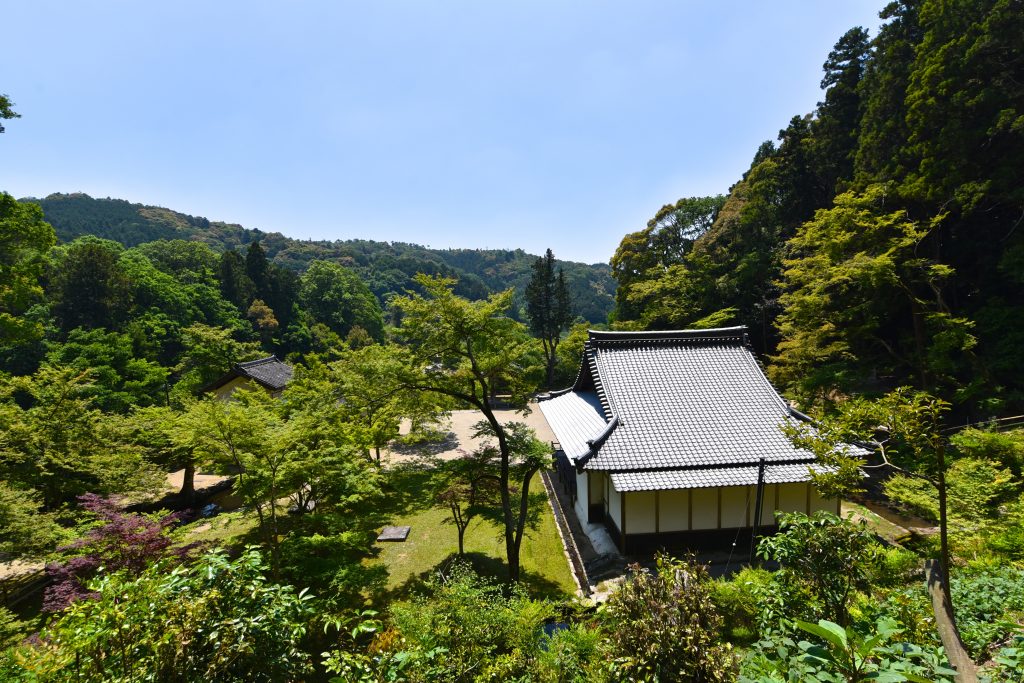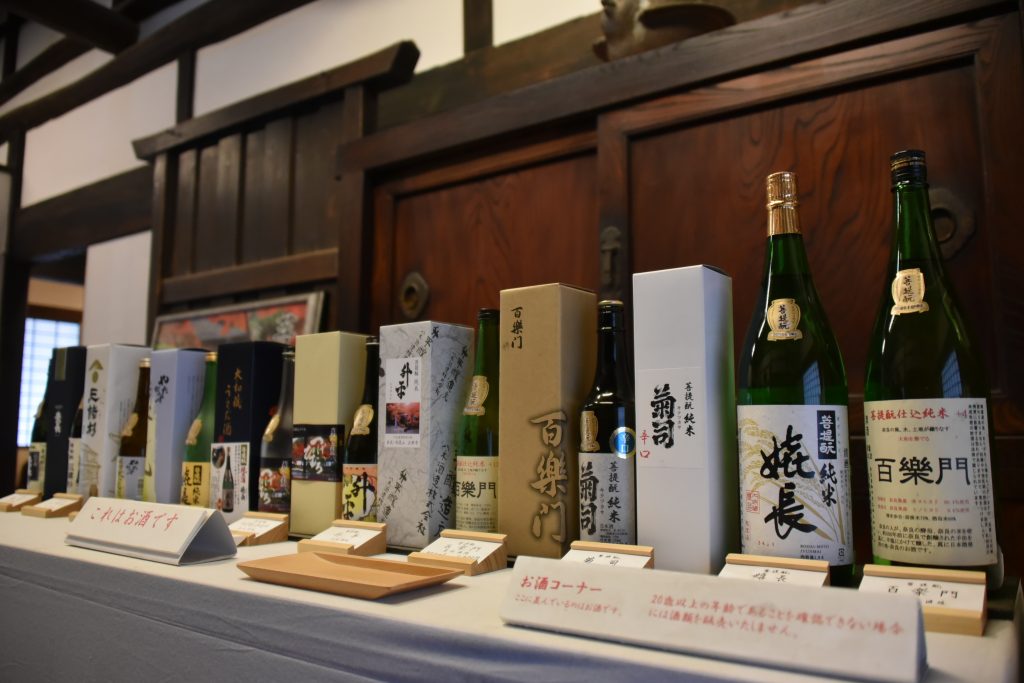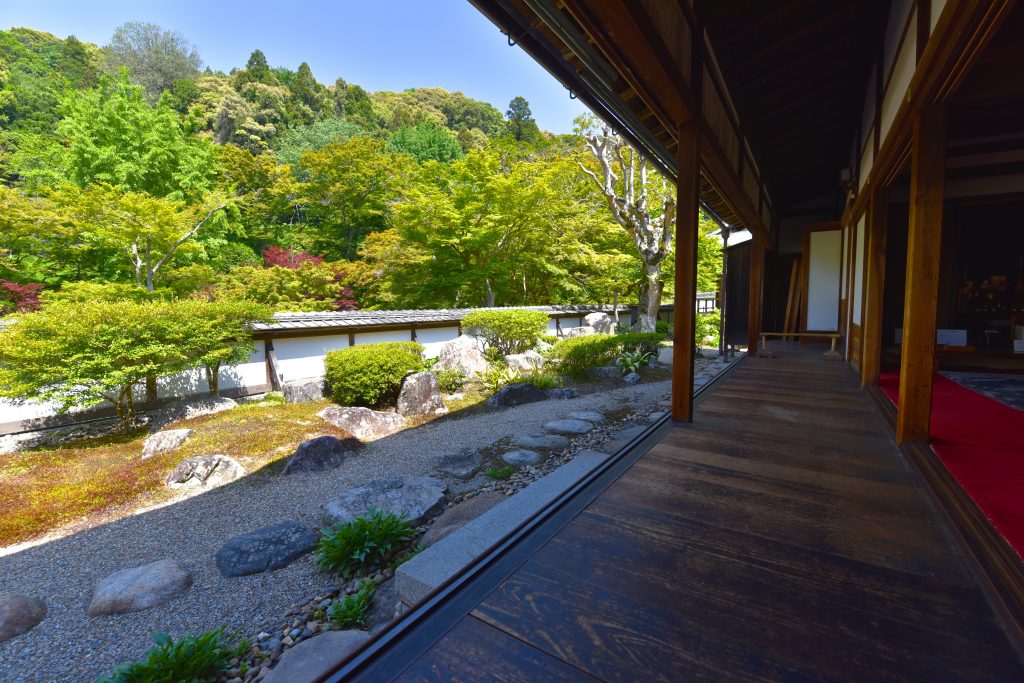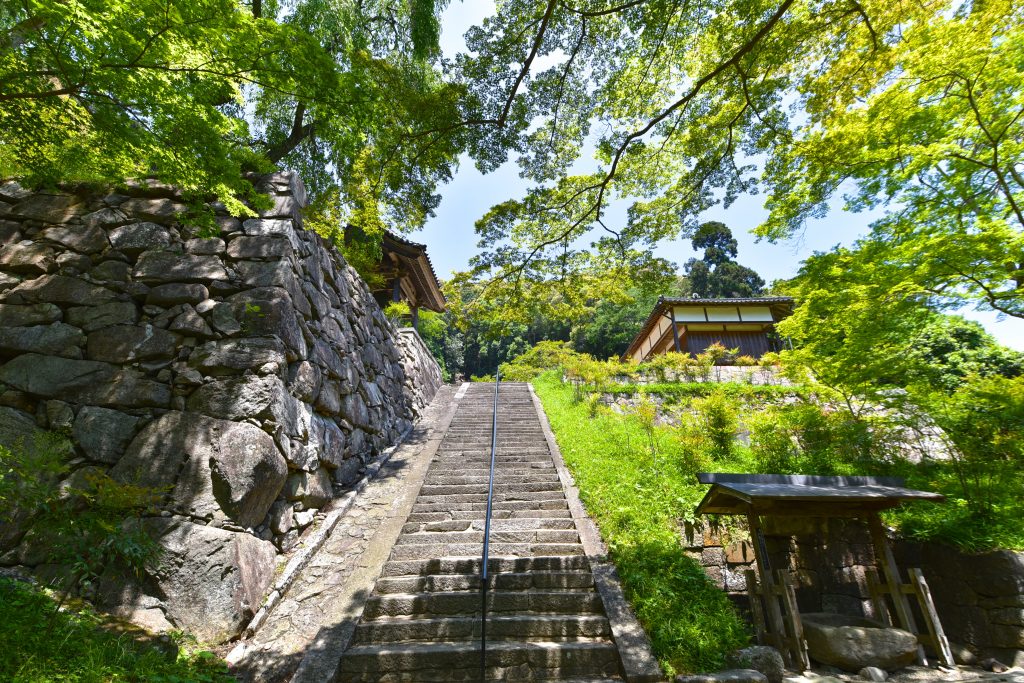Shoryaku-ji Temple: Dragons, Nature, and Sake
2021/11/20
Hidden deep in the forest above the suburbs just below Nara City’s eastern mountain range is the small, unassuming Shoryaku-ji Temple complex, a place which traces its origins all the way back to the Heian period year of 992 CE. Now only a fraction of the size it once was at the zenith of its influence, the temple grounds blends into the forest as if the old buildings and lichen-covered stone foundational walls were just another part of the original natural landscape. The Bodisen River flows through the complex along the floor of the canyon, giving the place a serene and healing atmosphere that is hard not to fall immediately in love with.

View from above the main hall of the temple
Legend states that Shoryaku-ji Temple was founded under the shelter of 2 dragon gods that inhabit the area. The rugged mountains which form the canyon walls to the north and south of the temple were worshipped as the embodiment of the dragons and the temple town thrived.
Sake Brewing
Starting in the distant past, some temples would make sake to give to enshrined deities and to sell for a profit. Found in the forests surrounding Shoryaku-ji was a special strain of fungus that the priests here used to create sake that would form the foundation of modern sake brewing in Japan. This method of production known as bodaimoto, spread throughout Nara and is still used to this today in traditional sake breweries.

Various types of locally made sake on display in the temple
Every November, Shoryaku-ji hosts a special sake tasting event for those interested in sampling delicious Japanese liquor made in the bodaimoto style right here in its original home of Nara.
Rich History and Beautiful Nature
During the early Edo period, Shoryaku-ji was a huge sprawling temple complex that had places of worship on both the canyon floor and the peaks of the mountains above which included 86 separate temple buildings. From the Edo period, the temple fell into decline and also many buildings were lost to fire. It also was greatly reduced in the Meij period by the laws separating Buddhism and Shinto. Despite all this, the temple itself as an institution still survived, with many treasures inside, including works of Buddhist art that are officially recognized as important culture properties by the Japanese government.

The main deity of worship here is Yakushi Nyorai, who is represented by bronze buddha statue that is around 1,200 years old. There is also an unusual Kamakura period statue of a Buddha riding a peacock that can be seen here. Peacocks are respected birds in Buddhism as they are considered very pure and are known to eat poisonous pests such as insects and snakes.

Stairway leading up to the main hall of Shoryaku-ji Temple
Shoryaku-ji has also been famous for centuries for its fall colors, especially momiji. These can be seen from the temple around mid-November until the start of December and often draw in large crowds. Outside of fall, the gentle sights and sounds of Nara’s natural environment can be experienced here at all times of year, and animals such as deer and wild boar both reported to be in the area.
Getting to Shoryaku-ji Temple is a bit of a journey as it has no nearby train line or regular bus with the exception of the fall season. The location of the temple is over 5KM away from the nearest train station (JR Obitoke Station), for those who wish to find their own way (cycling there is highly recommended for those who are feeling a bit more adventurous), or it may be necessary to take a taxi or rental car.

01
FIND YOUR FAVORITE
TRIP ON OUR WEBSITE.
SEND US AN INQUIRY.

02
PERSONALIZE THE TRIP
TO YOUR INTERESTS
WITH OUR CONSULTANT.

03
20% DEPOSIT TO CONFIRM.
BALANCE PRIOR TO ARRIVAL.
PAYMENT BY CC OR TT.

04
WE WILL
MEET YOU
AT THE AIRPORT.

05
DISCOVER THE
TREASURES!